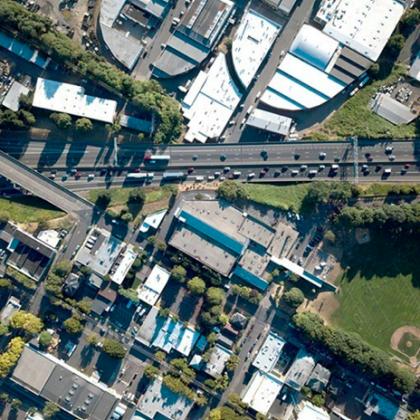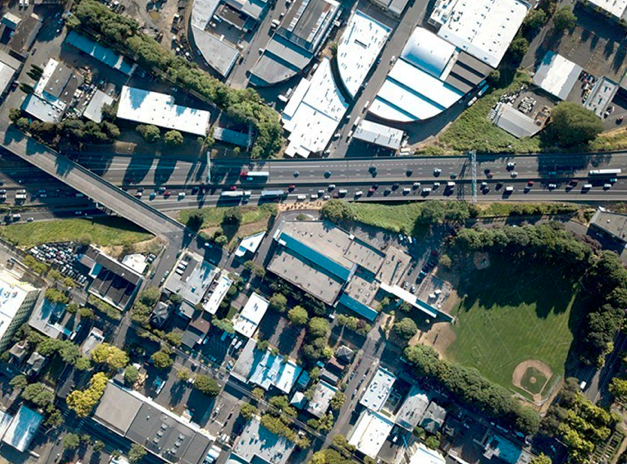Feature your business, services, products, events & news. Submit Website.
Breaking Top Featured Content:
Black Community Leaders Debate Best Use for ODOT’s Rose Quarter Expansion Investments


As the Interstate-5 expansion project in Portland’s Rose Quarter lumbers forward, a question remains unanswered within the Black community: What does it mean for the Oregon Department of Transportation (ODOT) to address and repair the harm to the Black community caused by the original I-5 project?
That was the topic of a Sunday webinar hosted by the Portland branch of the National Association for the Advancement of Colored People (NAACP).
The conversation follows years of debate over how the I-5 expansion will impact Black Portlanders. When ODOT constructed the original I-5 corridor in the late 1950s, it leveled hundreds of homes in the Albina neighborhood—Portland’s historically Black neighborhood—causing mass displacement of the Black community and loss of generational wealth. Now as ODOT seeks to address freeway congestion in the Rose Quarter 70 years later, there is an opportunity for Black Portlanders to leverage the project for investments in the revitalization of the historic Albina neighborhood.
Sunday’s webinar, moderated by Portland NAACP Executive Director Sharon Gary-Smith, highlighted two differing opinions on how to best achieve those investments: accept the project as is, or push ODOT to earmark property for community development in the project.
Raimore Construction, the Black-owned construction firm ODOT hired to complete the I-5 project, supports accepting the project as is. Jeff Moreland, one of the owners of the construction firm, believes the job creation from the project will lead to generational wealth and prosperity within the Black community.
“This is a once in a lifetime opportunity to gain family wage jobs, to help our businesses grow, create new businesses, and to endorse a long term vision for lower Albina,” Moreland said during the webinar. “We have to be able to balance the hopes and dreams of a prosperous long term future with the current, acute needs of our community.”
Albina Vision Trust (AVT), a nonprofit advocating for the revitalization of the Albina neighborhood, wants Black Portlanders to get the jobs that will come with the I-5 project, but the group also wants ODOT to build robust freeway covers as a way to return some of the neighborhood land that was demolished by the original construction of the freeway.
AVT views the I-5 project as a way to “restitch” the two halves of Albina that are separated by the freeway corridor. The “restitching” would be accomplished through freeway covers that could become property for Black-owned businesses and housing. AVT wants the freeway covers, as well as 94 acres of lower Albina, placed in a community land trust and designated for development by the Black community.
“We can take the opportunity to assert that Black people belong right in the heart of Portland, where we have always belonged,” Winta Yohannes, AVT’s managing director, said during the NAACP event. “The highway covers are intended to create land. This is not new land, this is land that already belonged to Albina that was stolen by ODOT. So it is the restoration of our land through these highway covers.”
The freeway covers have been a staple saga of the I-5 project. AVT partnered with ODOT in early 2020 with the intention of collaborating on the design of the freeway covers, but ultimately withdrew from collaboration in June 2020 when ODOT moved forward with a freeway cover design that does not support the multi-level buildings AVT wants.
ODOT is currently commissioning an independent highway cover assessment that is determining the cost of more robust covers, but documents recently obtained by the Willamette Week show that the independent review team believe ODOT is not giving them enough time to complete the assessment, essentially setting up the review of alternate cover designs to fail in order to avoid having to build more robust covers. ODOT rebuked those claims.
Raimore Construction is not fully in support of AVT’s plan because it would require changes to the current design of the project. Any design changes could trigger a new environmental assessment—a study of how the project will impact the surrounding community and environment—which would delay the project.
Moreland said he doesn’t want to lose the opportunity to create more jobs for the Black community if the Oregon Legislature chooses to move money slated for the I-5 project to a more “shovel ready” project because of delays. The Oregon Legislature has earmarked $30 million per year for the Rose Quarter expansion project starting in 2022. A bill proposed by House Speaker Tina Kotek, who represents North Portland, would free up some of that money for other freeway projects ODOT wants to complete. ODOT still plans to complete the I-5 expansion if the bill passes, but it may need to be funded differently.
Because the project is expected to take five years to complete, Moreland said even new hires will have enough time to move from apprenticeship to foreman and develop long term careers from this investment. That economic stability, Moreland argued, will allow the Black community to regain ownership of the Albina neighborhood.
Yohannes suggested that ODOT is forcing the Black community to choose between jobs and long term vision.
“At the heart of the issue, and why it seems like there’s confusion on this project is because ODOT has set up an ‘either-or’ scenario where one does not exist,” Yohannes said. “So we reject the scarcity narrative that is not rooted in anything real. This is not a debate about whether we have jobs or long term community vision, but really how we do both and how we address the systemic racism that keeps us from thinking we can do both.”
The I-5 project could be delayed for a slew of reasons unrelated to AVT’s demands. The project is currently facing two lawsuits from environmental groups, including one from No More Freeways that is pushing for an Environmental Impact Statement—a rigorous environmental study that takes several years to complete. The project designers also recently started exploring the possibility of expanding the freeway in the opposite direction after facing criticism that the current plan would push the freeway closer to Harriet Tubman Middle School. If the project does end up shifting the expansion away from the school, a new environmental assessment may have to be conducted anyway.
Yohannes claimed that ODOT is asking the Black community to give up land ownership in order to secure jobs. If ODOT is truly committed to restorative justice, Yohannes asked, why can’t it do both?
“Pitting us against each other in this way is a tool of white supremacy,” Yohannes said.
Moreland stressed that he is not against AVT or the community and invited AVT to re-up its collaboration with ODOT to work out a solution. Yohannes said that AVT will always be willing to discuss options, but asked for Moreland to be more willing to accept a delay in the project as conversations move forward.
The Portland NAACP will continue to host conversations about the I-5 expansion project. Future events and information on how to participate will be posted on the branch’s events page.
Continue Reading at PortlandMercury.com here
